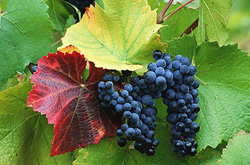From wine effluent to fuel
An EC-funded project has developed a means by which, slurry originating from the grape industry can now be processed through supercritical water gasification. Supercritical water gasification involves subjecting a solid to enormous temperatures under considerable pressures. This provides for the breakdown of solids not normally soluble and helps to promote certain chemical reactions. Pumped through a heat exchanger at 30MPa, the organic laden water travels through a 15 meter coiled tubular reactor where the slurry is heated to a reaction temperature of 600 degrees Celsius. During this passage, the organics are converted into the hydrogen rich fuel gas. Further treatment such as an additional water scrubbing, allows for the production of clean, renewable CO2 that can be used for commercial use. Traditional methods of slurry treatment such as for fertiliser and compost are limited due to pesticide content and such additives as copper, boron and arsenic. Combustion of these materials results in the emission of harmful VOC's and landfills prove to be too limited due to land resources. Therefore this current development promises a highly successful technology that can be applied to a number of industries. These include vegetable/fruit processing, packaging, animal husbandry, pulp and paper production, sewage treatment, bio-feedstock production and fuel crop production.



